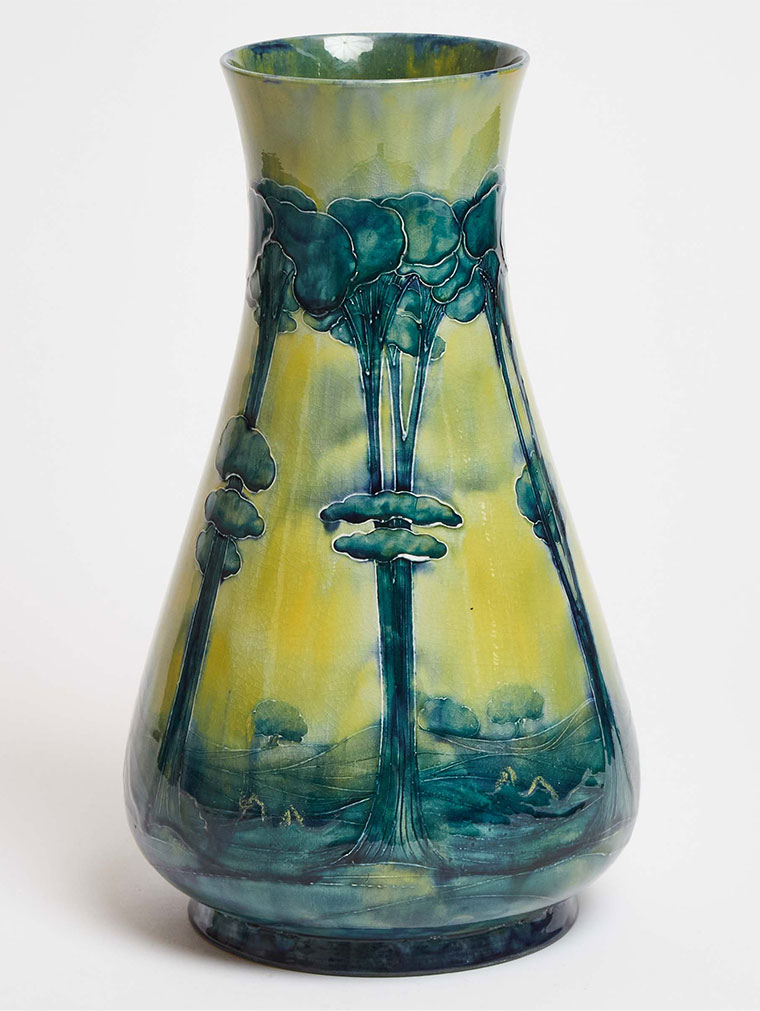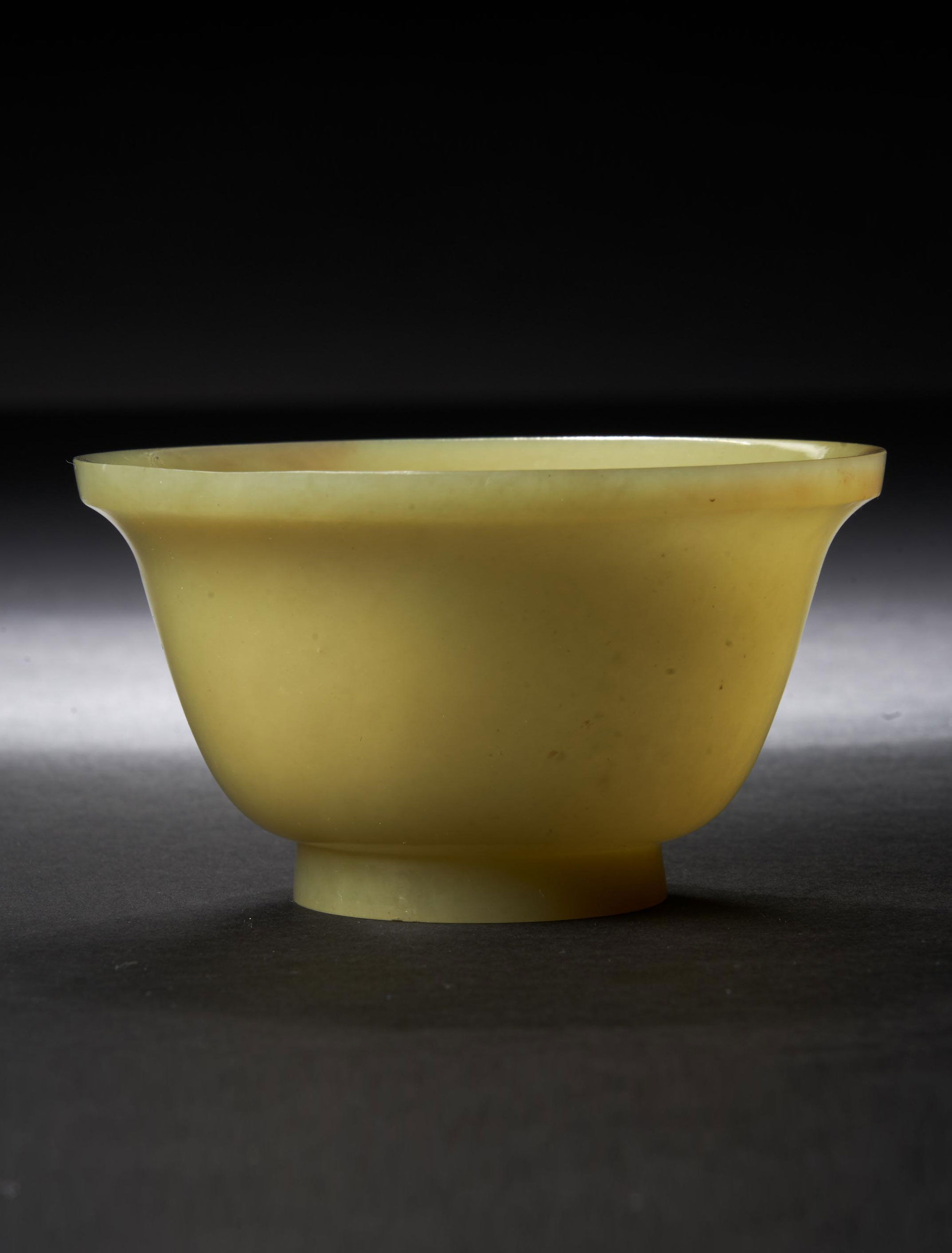“This was no party of the year, it was the celebration of twenty-five centuries!” – Orson Welles
Nine kings, five queens, sixteen presidents, and two sultans.
Welcome to the most expensive party in modern history: Shah Mohammad Reza Pahlavi’s banquet to commemorate the 2,500th anniversary of the Persian Empire.
The banquet was held on October 14, 1971, the pinnacle of an elaborate series of events commemorating the nation’s history, specifically the founding of the Iranian monarchy (Persian Empire) by Cyrus the Great. Planning for the event had begun well over a decade earlier. In her memoir, Farah Diba, the Shah’s wife, wrote that the party was part of the royal family’s campaign to prove that the Pahlavi era was “a period of renaissance for Iranian civilization.”
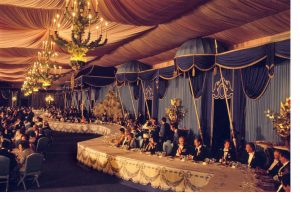
THE VENUE
The ruins of Persepolis, the ceremonial capital of the Achaemenid Empire (c. 550–330 BC), were chosen as the dramatic backdrop. Persepolis is located in the desert some 60 kilometres from the city of Shiraz, necessitating the construction of an expansive network of tents to house the celebrity guests. Known as the Tent City or Golden City, the tents sprawled across 160 acres, and took one year and 37 kilometres of silk to construct. The Tent City was orchestrated by Maison Jansen, a Parisian interior design firm who had also helped Jackie Kennedy decorate the White House.
Maison Jansen took its inspiration for the Tent City from the meeting between Francis I of France and Henry VIII of England at the Field of the Cloth of Gold in 1520, as well as from what ancient Persepolis might have looked like before it was lost to the desert. No luxury was spared: a forest and gardens were planted, with foliage flown in from France. Telephone lines and air conditioning were installed in each tent. Staff uniforms were designed by Lanvin in the Imperial household’s signature violet blue. To create atmosphere, 50,000 songbirds were flown in from Europe – though they weren’t able to adapt to the extreme desert climate and within days, had all perished.
CRÈME DE LA CRÈME IN THE KITCHEN
Though the aim of the celebration was to demonstrate Iran’s long history, the cuisine for the evening was French, to best express Iran’s refinement and its contemporary advancements under the Shah.
Maxim’s of Paris, which was then considered the best restaurant in the world, was in charge of the menu, partnering with hotelier Max Blouet, who came out of retirement to supervise the banquet. Many of the staff was brought in from France, totalling some 120 waiters and 40 cooks. Top of the line kitchen equipment — 150 tons’ worth — was flown in from Paris by the Iranian army, ready to process 18 tons of food, including: 2700 kg of beef, pork and lamb, 1280 kg of fowl and game, 30 kg of caviar, and a truckload of ice. Felix Real, one of the event’s organizers, recalled that “everything was flown in from Paris, even parsley and chives. Only the caviar came from Iran.”
The wine served was equally impressive. Maxim’s official journal of the festivities listed 2500 bottles of champagne, 1000 bottles of Bordeaux (including the legendary Château Lafite Rothschild 1945, and Château Haut-Brion Blanc 1964), 1000 bottles of Burgundy (including Musigny Comte Georges de Vogüé 1945). The Bündner Zeitung wrote of 12,000 bottles of whiskey, while other accounts spoke of 25,000 bottles. The opening toast was celebrated with Dom Perignon Rosé 1959. A sorbet was made with bottles of Moët et Chandon 1911 – a sixty-year-old vintage considered to be the best produced between 1874 and 1921.
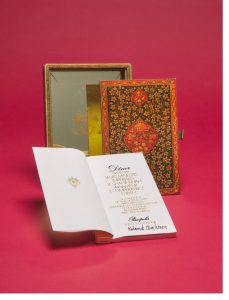
Despite the years of planning, not all elements were choreographed to perfection. The waitstaff discovered too late that the coffee machine was too small and slow to churn out cups at the rate required to service hundreds of guests. Real recalls that he’d had the foresight to bring 20 kg of Nescafé with him, which was duly served to guests out of big kettles. This wasn’t the only sleight of hand Real had to conjure that night: “the vintage cognac was from 1860. But we only had twelve bottles, not many for 500 guests. When I realized it wouldn’t be enough, I found two empty bottles and refilled them with Courvoisier. Nobody noticed.”
WHO’S WHO
A guest list to end all guest lists was assembled. Notable names from this 500-strong list included Princess Grace and Prince Rainier of Monaco, Vice-President Spiro Agnew of the United States, and Prince Philip and Princess Anne from the United Kingdom, sent in lieu of Queen Elizabeth II. French President Georges Pompidou cancelled at the last minute, which apparently angered the Shah. The guest of honour was Emperor Haile Selassie of Ethiopia—who RSVP’d for himself and five others, before arriving with a 72-person entourage. Accompanying him was his dog Cheecheebee, adorned with a diamond-encrusted collar suited to the glamour of the occasion. Interestingly, this event would unite the rulers of two of the oldest surviving monarchies, the Shah and Emperor Selassie – though by the close of the decade, neither monarchy would exist.
Waiter Dante Franzetti recalls that politics and business were of the utmost priority, with everyone trying to cozy up to the Shah in order to facilitate an entrance into the Iranian oil industry: “the men had absolutely no time for women in Persepolis.” Women weren’t entirely overlooked, however, with a team of French hairdressers on hand to assist guests, stocked with 300 wigs and 240 pounds of hairpins.
CHEQUE, PLEASE!
While the exact figure is unknown, estimates place the bill somewhere around 90 million USD, which, when adjusted to today’s rates, tops out at around $516 million. Historians argue that this massive expenditure exacerbated the populace’s dissatisfaction with the Shah, which would lead to the 1979 Iranian Revolution. Other historians suggest that these figures were overstated so as to discredit the Shah’s regime.
Ayatollah Khomeini, who would lead the Revolution which overthrew Shah Mohammad Reza Pahlavi and end the Persian monarchy in 1979, criticized the event: “Let them go all the way to Mars or beyond the Milky Way; they will still be deprived of true happiness, moral virtue, and spiritual advancement and be unable to solve their own social problems.”
To this, the Shah replied: “Should I serve heads of state bread and radishes instead?”
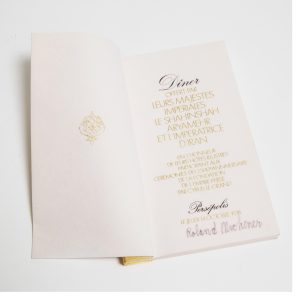
ROLAND MICHENER’S MENU
The Shah’s dinner party lasted over five and a half hours, making it the longest and most lavish official banquet in modern history – as certified by the Guinness Book of World Records. At the party was Roland Michener, a Canadian lawyer, politician, and diplomat who served as the country’s 20th Governor General, in office from 1967–1974.
Michener was present at many of the events which defined Canada in the last half of the 20th century. Only ten days into his tenure, he opened Expo 67, which happened to be visited by a few of the dignitaries who would be present at the Shah’s dinner party years later: Princess Grace and Emperor Haile Selassie. Michener also faced down a constitutional crisis while in office, when Prime Minister Lester B. Pearson’s government was defeated on a tax bill in February 1968. The FLQ Crisis also occurred during Michener’s period of service, sparking his invocation of the War Measures Act. Many years later, it was revealed that it was Michener himself, rather than James Cross and Pierre Laporte, who was the FLQ’s intended kidnapping target.
Michener ushered in a new precedent when he undertook a state visit to Trinidad and Tobago in 1971, followed by his trip to Persepolis for the Shah’s dinner party. These trips sparked controversy, as Michener was not Canada’s head of state yet was presiding over what looked like state visits. However, the success of these trips changed the conventions of the role, broadening the responsibilities of future Governor Generals. Michener and his wife Norah were also noted for relaxing protocol at Rideau Hall – particularly in their dissolving the requirement for women to curtsey.
After serving his term as Governor General, Michener and Norah relocated to the Rosedale neighbourhood of Toronto. He served as Chancellor of Queen’s University until 1980, and remained active in business.
Waddington’s is pleased to be offering several items from his estate, including memorabilia carefully kept from his time as Governor General. One of these items is the menu from Shah Pahlavi’s party to commemorate the Persian Empire’s 2,500th anniversary.
THE MENU
Printed in Paris by Tolmer in gold ink on pink wove paper, bound with a pink cord with gold silken spine, the menu notes the courses served at Persepolis:
Persepolis, le jeudi 14 octobre.
– Oeufs de Cailles aux Perles de Bandar Pahlavi – Vin nature de la Champagne Chateau de Saran
– Mousse de Queues d’Ecrevisses, Sauce Nantua – Chateau Haut-Brion blanc 1964
– Selle d’agneau des grands plateaux farcie et rôtie dans son jus – Chateau Lafite Rothschild 1945 en Magnum
– Sorbet au vieux Champagne (Moët 1911)
– Paon à l’Imperiale paré et entouré de sa Cour, Salade composée selon Alexandre Dumas – Musigny Comte de Vogüé 1945 en Magnum
– Turban de Figues garni de Framboises au Porto – Perignon Rosé 1959 Cuvée Rarissime
– Café Moka – Cognac Princ Eugène Réserve des Caves Maxim’s
About the auction
Waddington’s is pleased to present the estate of lawyer, politician, and diplomat Roland Michener. Michener served as the Speaker of the House of Commons from 1957 to 1962, the High Commissioner to India from 1964-1967, and as the Governor General of Canada from 1967 to 1974. The auction, Property From The Estate of Roland Michener, will be offered online from May 27 – June 1, 2023, and will be on view at our Toronto galleries as follows:
Wednesday, May 24 from 1:00 pm to 7:00 pm
Thursday, May 25 from 10:00 am to 5:00 pm
Friday, May 26 from 10:00 am to 5:00 pm
Saturday, May 27 from 10:00 am to 5:00 pm
Sunday, May 28 from 12:00 pm to 5:00 pm
Monday, May 29 from 10:00 am to 5:00 pm
Tuesday, May 30 from 10:00 am to 5:00 pm
Wednesday, May 31 from 10:00 am to 7:00 pm
Otherwise by appointment.
Please contact us for more information.
Related News
Meet the Specialist

Sean Quinn
Senior Specialist, Clocks, Sculpture & Lighting




